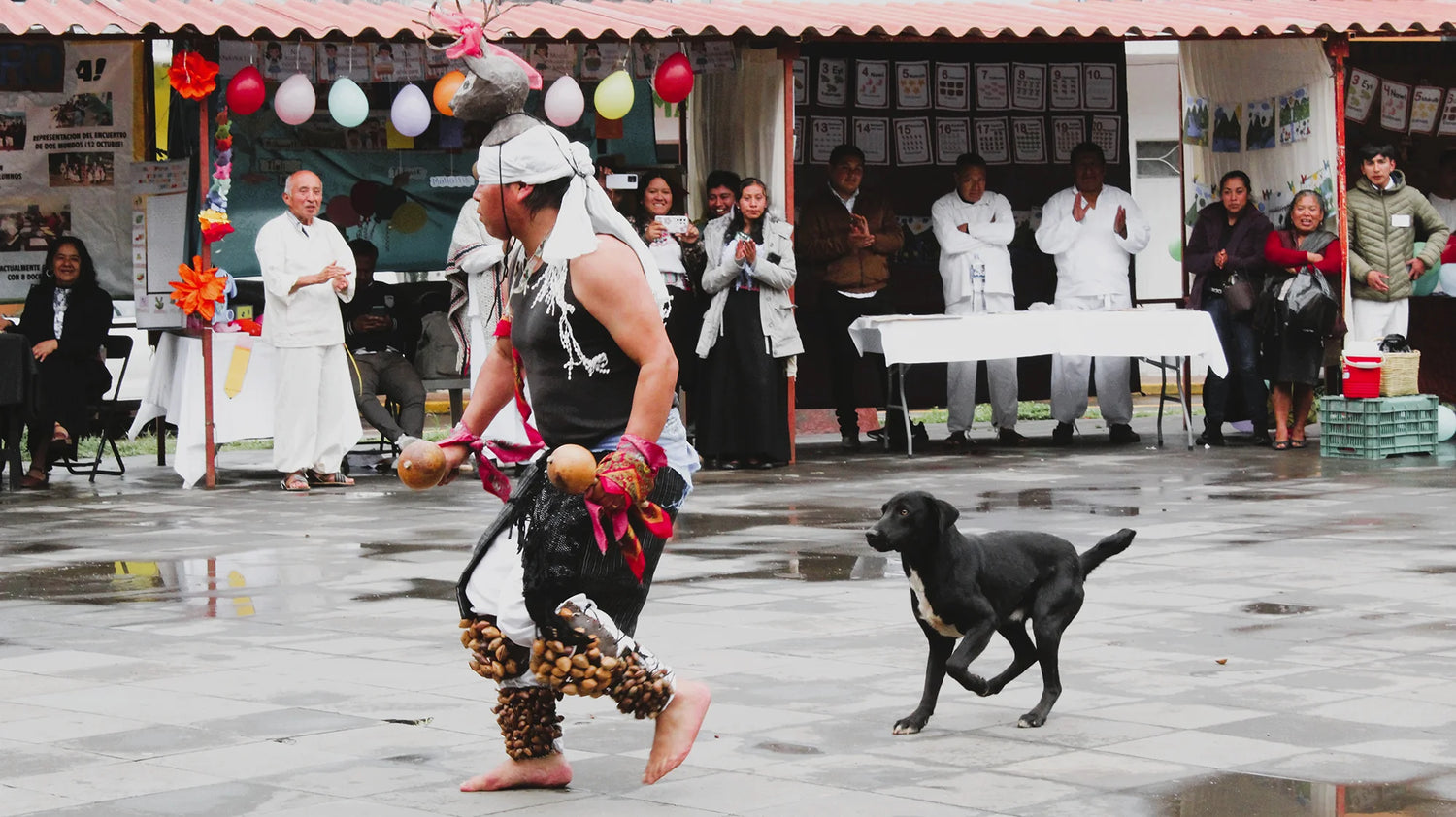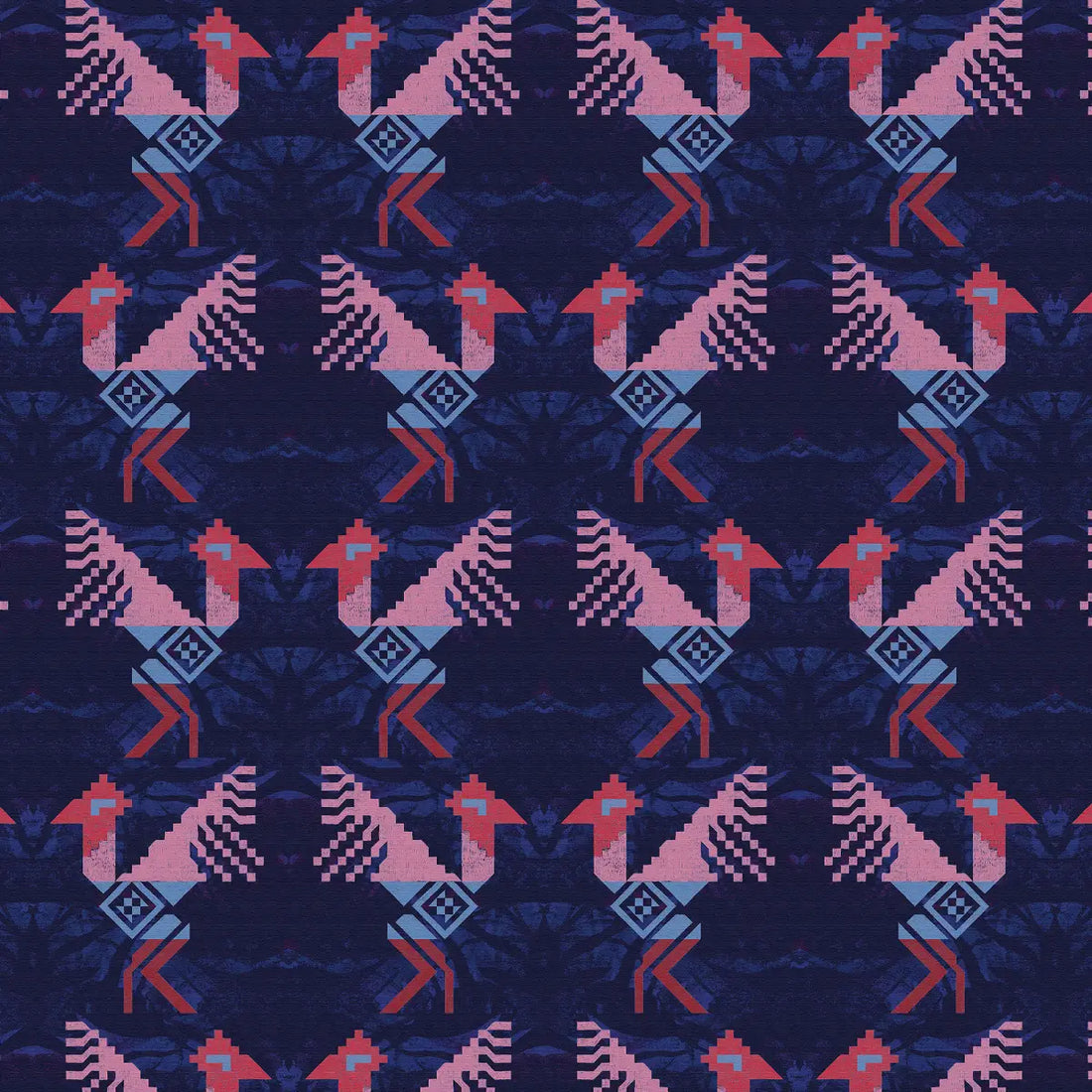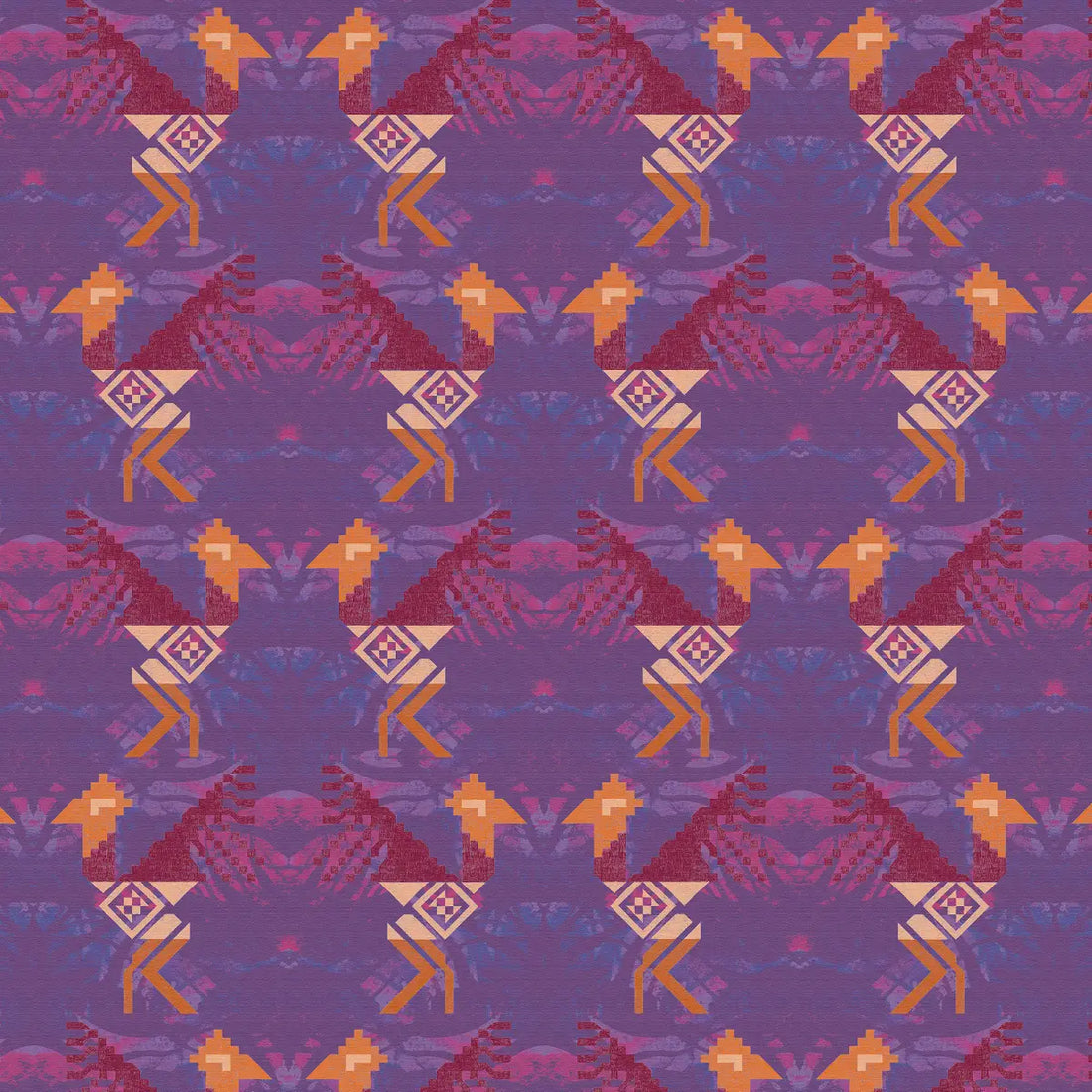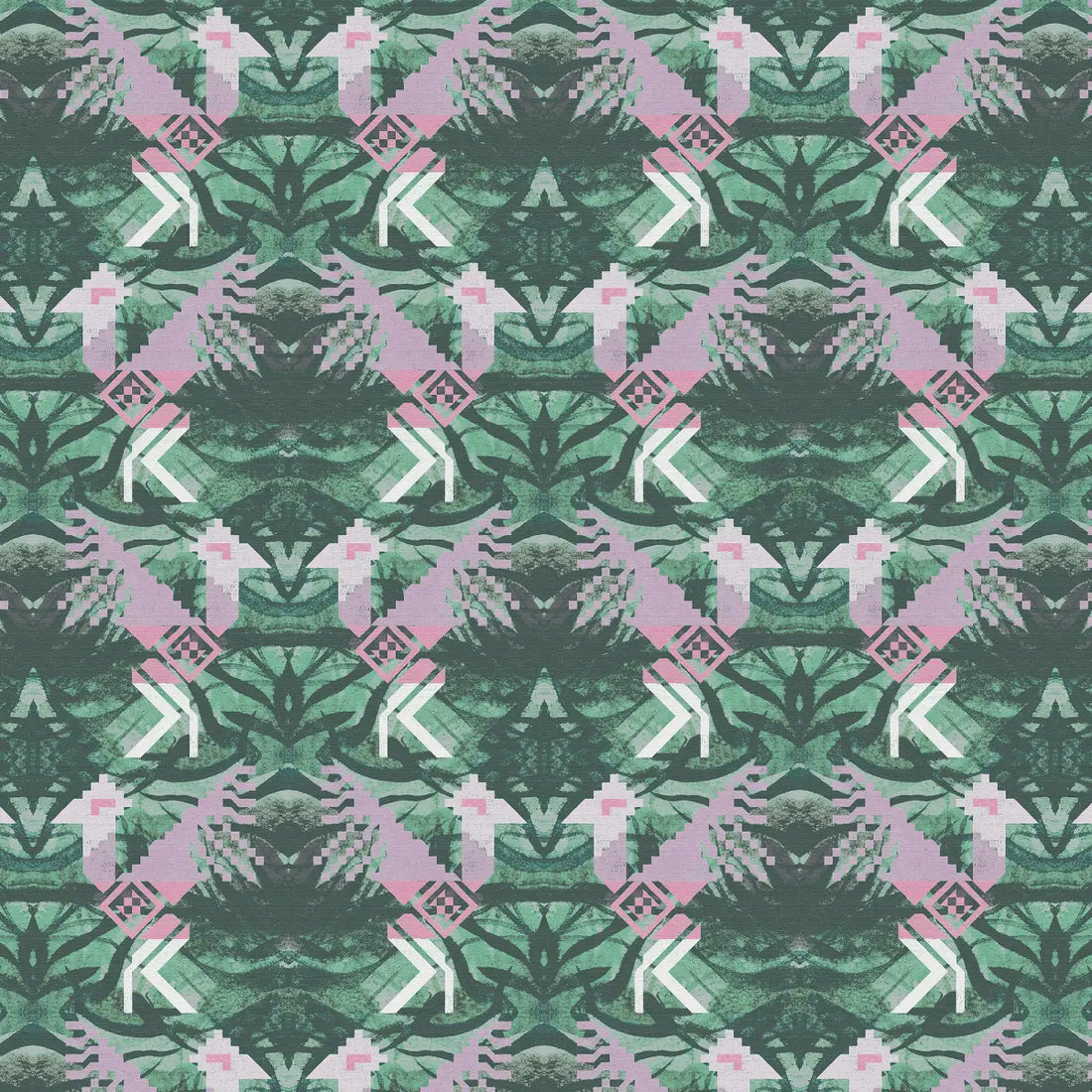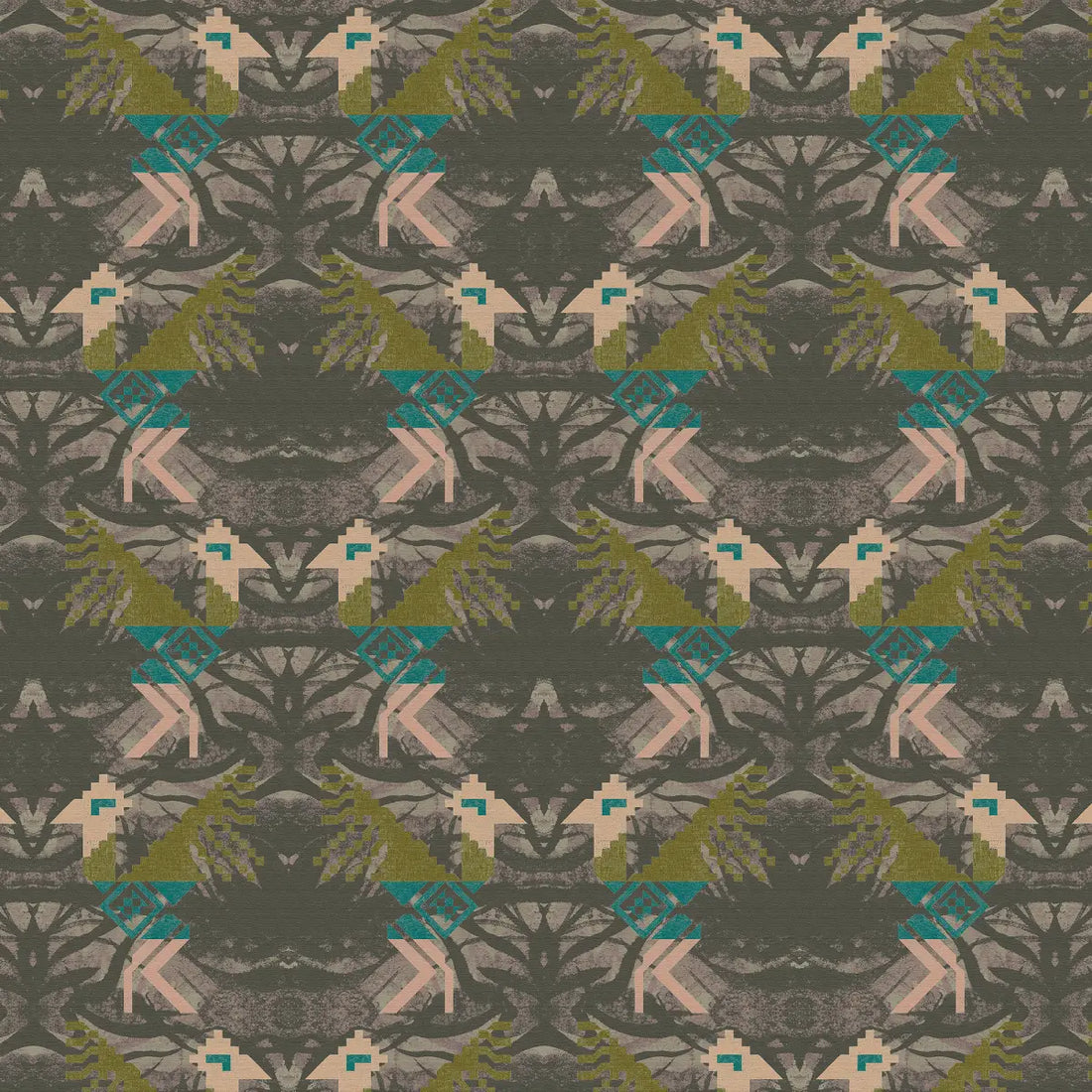"I believe that through our work and collective action, drawing on the wisdom of our indigenous communities, we can prevent humanity from losing its way. Environmental protection and cultural preservation deserve our utmost commitment and serious attention."
CUAUHTÉMOC WETZKA
-
Illustrating a Living Heritage
In the mist-veiled mountains of Veracruz, Mexico, where biodiversity flourishes and ancient wisdom lingers in the air, illustrator Cuauhtémoc Wetzka finds constant inspiration. His work, rooted in Nahua heritage and aimed primarily at children and youth, bridges ancestral knowledge and modern challenges—connecting generations and igniting imagination.
Recognized internationally for amplifying childhood and Indigenous voices, Cuauhtémoc’s illustrations have traveled far beyond his native Zongolica. His distinct style has been commissioned by global names like Google, Apple, and Cirque du Soleil's One Drop Foundation, while his exhibitions have spanned the globe—from Colombia and Guatemala to France, Estonia, Taiwan, and the United States.
Roots in Sacred Ground
"I'm from a town in Veracruz called Zongolica, known as the region of high mountains because it's a range of very large mountains that mark the boundary of the plains of Veracruz state," Cuauhtémoc explains. "We who live in this area are Nahuas, macehuales."
Both of his surnames are in Nahuatl—a language still spoken in his community. Raised by parents who were Indigenous educators, Cuauhtémoc accompanied them to remote schools, witnessing firsthand the beauty and struggles of Indigenous life. These early experiences in villages like Xopilapa shaped his artistic vision and sense of responsibility.
-
The Nurturing of Creativity
Creativity bloomed early in Cuauhtémoc’s life, nurtured by the women around him. His mother, a preschool teacher, encouraged artistic play at home and practiced embroidery, planting the first seeds of his visual storytelling. His grandmother Trinidad, now 92, shared a deep sensitivity to the natural world, often inviting young Cuauhtémoc to observe plants, animals, and the unseen. “These experiences,” he says, “helped me develop the capacity to fantasize and create characters.”
Art as Preservation
Now 39, Cuauhtémoc has dedicated his career to editorial illustration focused on young audiences. His work speaks to themes of memory, identity, and environmental stewardship.
"I focus on editorial illustration mainly aimed at children and youth. This comes from my desire to share, to open a dialogue with other places and especially with new generations, to establish reflections that lead us to think about the importance of preserving the environment, our nature, our identity."
Textile artisans, especially women weavers from his region, remain a profound influence. "The artisan women who continue making these kinds of works have always inspired me," he shares. "I've always seen them as masters, masters of life and masters of creativity, making things that sometimes cannot be done elsewhere."
-
Natural Palette and Technique
Trained in graphic design but deeply connected to traditional methods, Cuauhtémoc blends mediums to honor the beauty and intricacy of nature.
"The colors I use are primarily inspired by nature," he explains. "All of this provokes different sensations in me that excite and surprise me and make me want to capture it, although nature is perfect and it's very difficult for anyone to draw that way."
He often incorporates seeds, leaves, and other natural elements into his creative process, letting the forest speak through texture and form.
Guardian of Biodiversity
"Indigenous peoples are the ones who still safeguard much of the world's biodiversity," he says. Cuauhtémoc’s work documents and celebrates the rich ecosystems of Veracruz—birds, insects, and plants—while alerting audiences to the threats of deforestation and water scarcity that he’s seen firsthand.
-
Looking Forward with Hope
Despite the mounting challenges, Cuauhtémoc’s work is anchored in optimism and a deep belief in the wonder of children.
"Children are teachers," he observes. "Children are creative, sensitive; children always project joy toward this world and above all have a capacity for wonder. When I teach children, I can see in them the joy of being surprised through a drawing, through texture, through color."
His illustrations are more than images—they are a form of activism, a love letter to nature, and an invitation to dream. By blending traditional knowledge with contemporary tools, Cuauhtémoc Wetzka is not only preserving a living heritage—he’s expanding its future.
"Children's eyes show us that change is possible and hope remains alive for humanity. By truly listening to our children, we can create better horizons for our collective future."
CUAUHTÉMOC WETZKA


